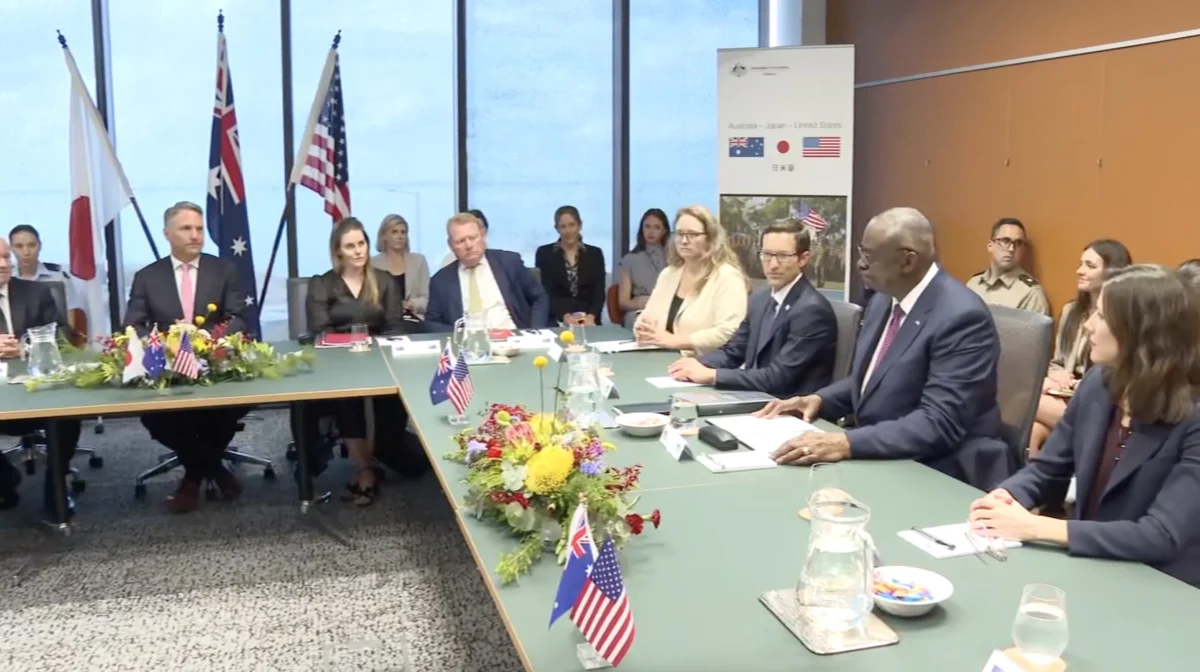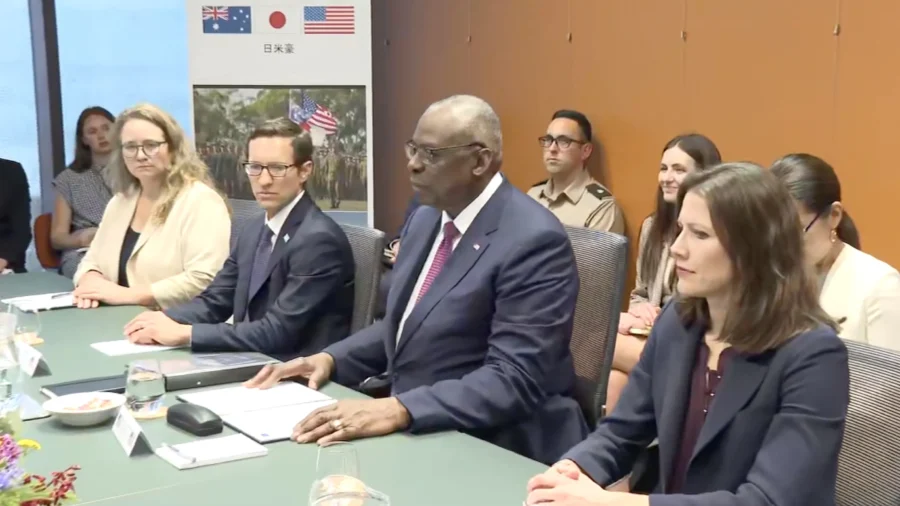U.S. Secretary of Defense Lloyd Austin III met with his Australian and Japanese counterparts in Darwin, Australia, on Nov. 17 for the 14th trilateral meeting between the countries, highlighting concerns about the Chinese communist regime’s “destabilizing actions” in its neighboring waters and announcing new joint military exercises.
“Today, more than ever, we’re taking concrete actions that will deepen our trilateral cooperation, and the three of us are here to see the results firsthand,” Austin said in a press briefing following the meeting. “Darwin is a focal point for our expanding trilateral relationship, and our bond is delivering real security, deterrence, and interoperability.
Austin, Australian Deputy Prime Minister and Minister for Defense Richard Marles, and Japanese Minister of Defense Nakatani Gen released a joint statement ahead of the meeting emphasizing their shared interest in upholding peace and stability in the Indo-Pacific.
They cited the Chinese communist regime’s “dangerous conduct” against Philippine ships and violation of international laws governing territorial lines and freedom of navigation in international waters as the key destabilizing factors in the region.
“We reiterate our strong opposition to any unilateral attempts to change the status quo by force or coercion,” the ministers stated, citing a 2016 ruling from the Arbitral Tribunal in The Hague in 2016 that found the Chinese Communist Party’s (CCP) claim of nearly the entire South China Sea to be legally meritless.

The defense ministers also condemned North Korea’s recent firing of an intercontinental ballistic missile off its coast and the deployment of its troops to Russia.
The three countries announced plans to increase joint drills, the establishment of a Trilateral Defense Consultations line of communication “to support alignment of policy and operational objectives” of the respective military forces, and existing bilateral command centers will now welcome representatives from a third partner.
“Our countries intend to continue to work together to strengthen regional deterrence, including through cooperating on a networked air and missile defense architecture to counter the growing range of threats throughout the Indo-Pacific,” the ministers stated.

In 2025, the the Australian Defense Force, the Japan Ground Self-Defense Force’s Amphibious Rapid Deployment Brigade, and the United States Marine Rotational Force will begin an annual trilateral amphibious training exercise known as Talisman Sabre. By 2027, this exercise will include regional air and missile live fire exercises, which the ministers described as a “key milestone.”
Japan will also increase its contribution to the “Southern Jackaroo” exercises in Australia, and the exercises will drill more complex scenarios beginning in 2025 to increase the three nations’ ability to coordinate.
Next year, Australia will also join the Orient Shield exercises that the United States already holds with Japan, and will increase its participation in exercises Yama Sakura, Keen Edge, and Keen Sword.
Australia, Japan, and the United States are also looking at opportunities to increase joint air drills beginning next year.
The nations are also increasing cooperation in intelligence, surveillance, and reconnaissance, and Australian personnel will join the Japan-U.S. Bilateral Information Analysis Cell (BIAC), and military research and development.
The countries already have a trilateral research and development agreement and will target aerospace materials and autonomous systems. In the ministers’ statement, they signaled a focus on co-developing autonomous capabilities related to combat aircraft.

